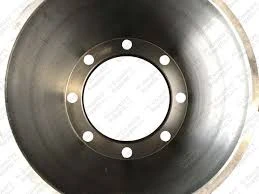
-
 Afrikaans
Afrikaans -
 Albanian
Albanian -
 Amharic
Amharic -
 Arabic
Arabic -
 Armenian
Armenian -
 Azerbaijani
Azerbaijani -
 Basque
Basque -
 Belarusian
Belarusian -
 Bengali
Bengali -
 Bosnian
Bosnian -
 Bulgarian
Bulgarian -
 Catalan
Catalan -
 Cebuano
Cebuano -
 Corsican
Corsican -
 Croatian
Croatian -
 Czech
Czech -
 Danish
Danish -
 Dutch
Dutch -
 English
English -
 Esperanto
Esperanto -
 Estonian
Estonian -
 Finnish
Finnish -
 French
French -
 Frisian
Frisian -
 Galician
Galician -
 Georgian
Georgian -
 German
German -
 Greek
Greek -
 Gujarati
Gujarati -
 Haitian Creole
Haitian Creole -
 hausa
hausa -
 hawaiian
hawaiian -
 Hebrew
Hebrew -
 Hindi
Hindi -
 Miao
Miao -
 Hungarian
Hungarian -
 Icelandic
Icelandic -
 igbo
igbo -
 Indonesian
Indonesian -
 irish
irish -
 Italian
Italian -
 Japanese
Japanese -
 Javanese
Javanese -
 Kannada
Kannada -
 kazakh
kazakh -
 Khmer
Khmer -
 Rwandese
Rwandese -
 Korean
Korean -
 Kurdish
Kurdish -
 Kyrgyz
Kyrgyz -
 Lao
Lao -
 Latin
Latin -
 Latvian
Latvian -
 Lithuanian
Lithuanian -
 Luxembourgish
Luxembourgish -
 Macedonian
Macedonian -
 Malgashi
Malgashi -
 Malay
Malay -
 Malayalam
Malayalam -
 Maltese
Maltese -
 Maori
Maori -
 Marathi
Marathi -
 Mongolian
Mongolian -
 Myanmar
Myanmar -
 Nepali
Nepali -
 Norwegian
Norwegian -
 Norwegian
Norwegian -
 Occitan
Occitan -
 Pashto
Pashto -
 Persian
Persian -
 Polish
Polish -
 Portuguese
Portuguese -
 Punjabi
Punjabi -
 Romanian
Romanian -
 Russian
Russian -
 Samoan
Samoan -
 Scottish Gaelic
Scottish Gaelic -
 Serbian
Serbian -
 Sesotho
Sesotho -
 Shona
Shona -
 Sindhi
Sindhi -
 Sinhala
Sinhala -
 Slovak
Slovak -
 Slovenian
Slovenian -
 Somali
Somali -
 Spanish
Spanish -
 Sundanese
Sundanese -
 Swahili
Swahili -
 Swedish
Swedish -
 Tagalog
Tagalog -
 Tajik
Tajik -
 Tamil
Tamil -
 Tatar
Tatar -
 Telugu
Telugu -
 Thai
Thai -
 Turkish
Turkish -
 Turkmen
Turkmen -
 Ukrainian
Ukrainian -
 Urdu
Urdu -
 Uighur
Uighur -
 Uzbek
Uzbek -
 Vietnamese
Vietnamese -
 Welsh
Welsh -
 Bantu
Bantu -
 Yiddish
Yiddish -
 Yoruba
Yoruba -
 Zulu
Zulu
Exploring New Cars Equipped with Drum Brakes for Enhanced Driving Experience
Exploring New Cars with Drum Brakes A Look into the Classic Technology in Modern Vehicles
In an era dominated by advanced automotive technology, the design and functionality of brake systems remain a critical area of enhancement in car manufacturing. While disc brakes have taken center stage in most new vehicles, drum brakes persist as a compelling option, especially in certain economic models and niche markets. This article explores the continuing relevance of drum brakes in the world of new cars, their benefits, and considerations for potential buyers.
The Basics of Drum Brakes
Drum brakes operate through a simple yet effective mechanism. They consist of a cylindrical drum that rotates with the wheel and brake shoes that press against the inside of the drum when the brake pedal is engaged. This design allows for ample stopping power and can effectively deliver reliable performance, particularly for lighter vehicles and applications where cost savings are paramount.
Advantages of Drum Brakes
1. Cost-Effectiveness One of the standout benefits of drum brakes is their cost. They are generally cheaper to manufacture and install than their disc brake counterparts. As a result, many budget-friendly and entry-level cars incorporate drum brakes, making them accessible to more consumers.
2. Ease of Maintenance Drum brakes typically require less frequent maintenance. Their sealed design protects the brake components from dirt and water, contributing to a longer lifespan. For drivers who want a low-maintenance option, this characteristic can be a significant advantage.
3. Enhanced Performance in Specific Conditions While disc brakes excel in high-performance and high-heat situations, drum brakes can perform surprisingly well under certain conditions, especially in slower driving scenarios. Their design allows for better brake force distribution, which can be advantageous in city driving, where frequent stopping is common.
4. Space Efficient Drum brakes take up less space than disc brakes, making them especially attractive for compact cars and smaller vehicles where design constraints are a consideration. Their compactness allows for more efficient use of vehicle design, contributing to weight reduction and enhanced fuel efficiency.
new cars with drum brakes

Considerations for Drum Brake Users
While drum brakes have their advantages, potential buyers should weigh these against some inherent limitations
1. Heat Dissipation Drum brakes can struggle to dissipate heat during extended braking applications, such as downhill driving or high-speed braking. This can lead to brake fade, reducing effectiveness. For drivers who frequently engage in such conditions, disc brakes might be more suitable.
2. Performance Limitations For sports cars and high-performance vehicles, drum brakes generally lack the performance characteristics of modern disc brakes. As a result, manufacturers predominantly reserve drum brakes for economy models.
3. Aesthetics and Technology Perceptions In a market where consumers often equate better technology with superior performance, the use of drum brakes may carry a perception of being outdated. This can influence buyer preferences, causing potential customers to overlook vehicles equipped with drum brakes despite their benefits.
Conclusion
As we continue to see new models released, drum brakes maintain a steady presence in the automotive market. They hold firm in budget-friendly vehicles and certain lineups where practicality trumps high performance. For those considering a new purchase, it is crucial to evaluate personal driving habits and preferences when deciding between drum and disc brakes.
Ultimately, while drum brakes may not be the first choice for every driver, they offer a compelling case within specific contexts, reminding us that traditional automotive technologies still have their place in an increasingly innovative industry. Whether you're a budget-conscious buyer or simply looking for a reliable daily driver, new cars equipped with drum brakes deserve consideration in today’s diverse automotive landscape.
-
What Are Drum BrakesNewsJul.07,2025
-
Understanding Brake Drum MaterialNewsJul.07,2025
-
Semi-Trailer Brake Drum: A Key Component for Extreme Loads and Long-Distance TransportNewsJul.07,2025
-
Drum Brake Pads for SaleNewsJul.07,2025
-
Brake Drums for SaleNewsJul.07,2025
-
Brake Drum ManufacturerNewsJul.07,2025
-
Aluminum Brake Drums: The Future of High-Performance CarsNewsJul.07,2025
